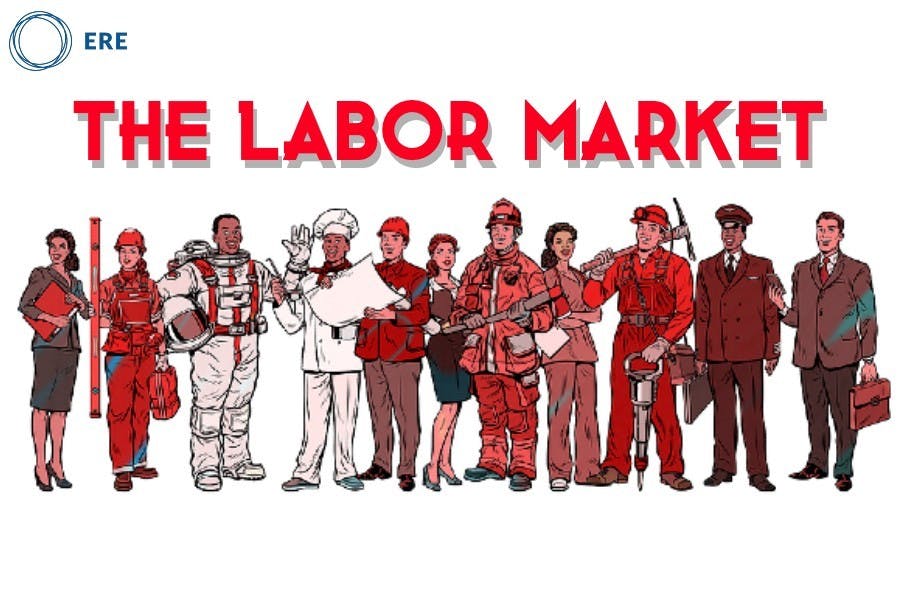The labor market report we’ve been waiting for finally arrived in late summer, but there is still a lot of caution in the outlook due to quickly rising Covid virus counts. Let’s focus on the good news first.
There were 943,000 jobs added in July, and the previous two months were revised upwards, with 938,000 jobs added in June and 614,000 in May. Month-to-month job gains were anything but consistent through the first half of the year, so it’s a very welcome sign to see consecutive months with monster job numbers.
The sum of gains means that the U.S. has added 2.5 million jobs to the economy in a three-month span, a number that would normally be considered good for 12 months of growth.
Got Many Job Openings? So Does Everybody Else.
We are still climbing out of the hole created by the pandemic, but businesses are trying to fill the void. It might sound like a broken record at this point, but the number of job openings hit a new high once again: There are currently more than 10.1 million open jobs across the country, a number that has peaked four months in a row.
The number of hires jumped up, as well, but not enough to fill all the available roles. More than 6.7 million hires occurred in June, which represents the transition of people going from one job to another. As part of that movement, the number of people quitting their jobs was back to a near-record high, at 3.9 million. Hanging on to talent is going to remain a critical focus for businesses in the foreseeable future, given how competitive the job market is right now.
Meanwhile, the quits rate was especially elevated in two specific industries, both of which are worth watching over the next several months. The accommodation and food services industry, otherwise known as hotels and restaurants, experienced 5.7% of employees quitting in June. For retail trade, 4.1% of employees quit.
Yes, those industries tend to have higher turnover than most others, but those figures were at or near record levels since 2000.
Now, multiply those turnover rates by 12 months and see what the voluntary turnover rate would be on an annual basis. Scary. Both industries hired more than 1.1 million people each in the last month so roles are being backfilled, but the rate of churn is elevated.
Moving forward, those industries will likely be impacted from opposing angles — a combination of increased Covid counts that could put business demand in jeopardy, as well as the expiration of enhanced unemployment benefits that has the potential to increase talent supply.
Then there’s the financial activities industry, which is on the brink of being the first major industry to recapture all jobs lost during the pandemic. Nationally, it added 22,000 jobs in July and is only 48,000 jobs from being back to its (pre-pandemic) February 2020 employment level. The lending and investment sectors have also fared well, and now real estate is making a charge, adding most of the industry’s jobs in July.
The Outlook
Even with the improvement in job gains, the U.S. still has 5.7 million jobs to recover from the pandemic. So can we just keep adding 900,000 jobs a month and be done with all this before the end of winter? Probably not.
The good news is that the overall U.S. recovery timeline has slightly improved, and a full recovery by the end of 2022 is not out of reach. That’s incredible given how many jobs were lost, and the labor market only needs about 335,000 jobs added per month to get us there.
Some tailwinds could boost growth in the near-term, such as the scheduled end to additional unemployment benefits for the remaining states on Sept. 6. At the same time, a portion of people have remained on the sidelines and others who fear the virus are still hesitant to rejoin the workforce, making the outlook somewhat hazy.
Without threat of the Delta variant and another major surge in virus counts, the country was set to have a blockbuster fall for job growth. The world was supposed to keep progressing back to old norms with a larger share of workers returning to the office and business travel resuming. The Delta variant has turned some of those trends on their head. Each day is filled with news stories of more companies delaying a return to office, some in-person conferences starting to be canceled, and the re-introduction of mask mandates so we could see the impact on job growth.
Do not be surprised to see the pace of job gains to moderate from the torrid pace of the last couple of months. If there is a silver lining, it’s that we’ve been through this multiple times during the last year-and-a-half. Businesses have mostly figured out how to navigate the day-to-day challenges of Covid, as well as how to execute on strategic goals.
As mentioned, the financial activities industry is doing well and should be the first industry to recapture all jobs, likely by the end of this year. Look for construction, healthcare, and most of the professional and business services industry to have fully recovered by mid-to-late 2022. Until then, let’s hope the new uncertainty surrounding the virus does not disrupt the candidate pipeline, which has been providing more hiring throughout the past few months.
